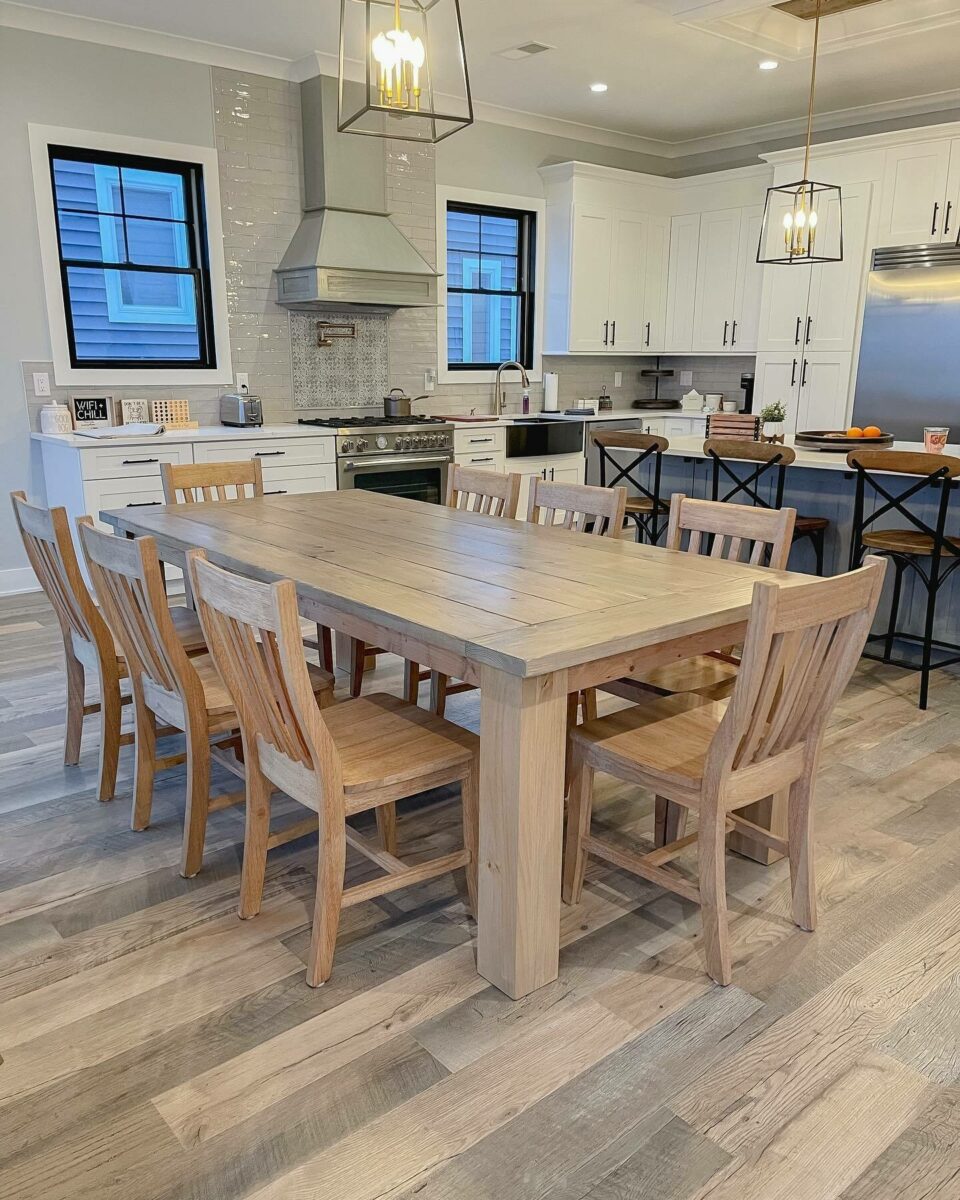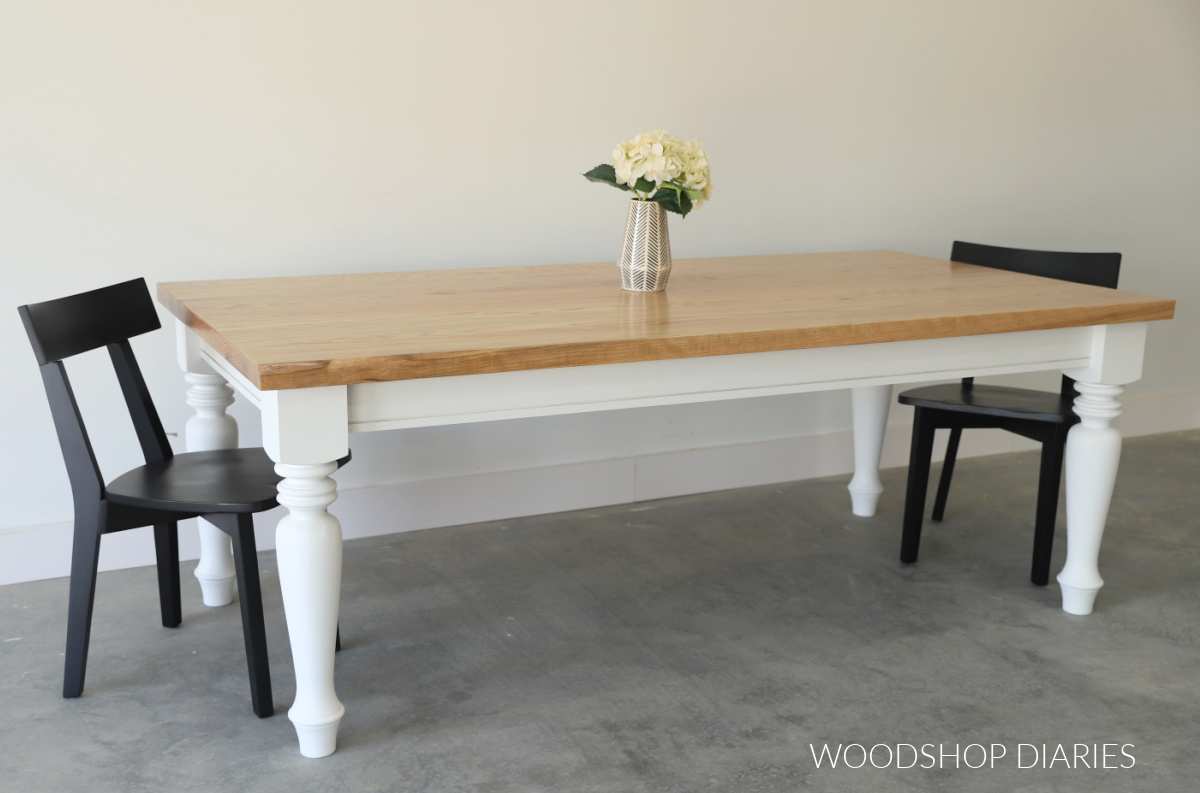Raise Your Dining Area with Classy Dining Table Legs Wood Styles
Raise Your Dining Area with Classy Dining Table Legs Wood Styles
Blog Article
Secret Variables to Remember for Table Legs Timber Choices
When choosing timber for eating table legs, several crucial factors warrant cautious consideration to make sure both capability and visual charm. The choice of wood type, identified by its resilience and special grain patterns, plays a critical role in the total design and longevity of the piece. Additionally, one must consider upkeep requirements and the ecological effects of sourcing materials. As these elements intertwine, they significantly affect the last result of your table. Comprehending the nuances of each aspect can be complicated, leading to crucial decisions that merit additional expedition.
Wood Types and Characteristics
When selecting timber for dining table legs, it is vital to understand the special features of various wood types. Various woods use distinctive advantages and downsides, influencing both the durability and visual allure of the finished item.
Hardwoods, such as oak, cherry, and maple, are commonly preferred for their strength and resistance to put on. Oak, recognized for its excellent durability, additionally includes a noticeable grain that can add character to the table. Maple uses a smooth surface and is much less prone to warping, making it a dependable choice for practical furniture. Cherry wood, with its abundant shade that strengthens with time, supplies a lavish appearance however may call for even more upkeep to stop scratches.
On the other hand, softwoods like yearn and fir are extra affordable and much easier to collaborate with, yet they are much less resilient than woods. Pine is light-weight and includes a cozy, rustic look, making it a popular choice for laid-back eating settings. Nonetheless, it is extra at risk to scrapes and dents.
Understanding these attributes will certainly assist in making a notified decision to make sure the legs of the table satisfy both visual and functional needs.
Grain Patterns and Visual Appeal
Selecting the ideal grain pattern can considerably boost the visual charm of dining table legs. The timber's grain is not simply an aesthetic quality; it imparts a distinct individuality and beauty to every item. Different wood varieties show distinctive grain patterns, varying from the straight lines of maple to the detailed swirls of oak and the striking figure of walnut. These patterns can evoke numerous designs, from rustic to modern-day, making it vital to select a grain that lines up with the overall style of the eating room.
In addition, the positioning and range of the grain can influence the perceived size and elegance of the table. For example, larger, extra pronounced grains might lend a bold, significant impact, while finer, subtler grains can create an improved, understated look. Furthermore, the finishing procedure can further improve these patterns, highlighting the natural elegance of the timber and bringing out abundant colors.
Eventually, the selection of grain pattern ought to balance with other style elements, such as the table top and surrounding furniture, making sure a natural visual that elevates the dining experience. Thoughtful selection of wood grain not only adds to the table's elegance yet also shows the owner's preference and style.
Resilience and Strength
The toughness and stamina of eating table legs are critical considerations for ensuring durability and stability in any type of dining space. Choosing the best wood is crucial, as different varieties display varying degrees of durability.

Inevitably, buying high-quality wood and durable construction techniques will generate a table that stands the test of time, while providing a reliable foundation for plenty of dishes shared among family members and pals. Prioritizing toughness and stamina ensures that your table stays practical and cosmetically pleasing for years to find.
Upkeep and Treatment
Proper maintenance and treatment are essential for preserving the durability and helpful site stamina of dining table legs made from timber. Regular cleansing is necessary; making use of a soft, moist fabric makes sure that dirt and particles do not collect, which can result in scrapes and dullness. It is recommended to avoid rough chemicals or rough products that might damage the surface.
Additionally, using an appropriate wood gloss or wax periodically can assist preserve the luster and secure the timber from dampness and spills. It is essential to adhere to the producer's referrals regarding the kind of product to utilize, as particular coatings may respond detrimentally to particular chemicals.
Moisture and temperature level changes can likewise impact wooden table legs, causing them to warp or crack. It's best to position the table away from direct sunshine and warmth resources. If the table legs have any type of scratches or dents, addressing these quickly can prevent more damage.
Lastly, regularly checking the joints and screws for tightness is necessary to preserve structural honesty (Dining Table Legs Wood). By adhering to these maintenance techniques, homeowners can ensure their wooden have a peek here dining table legs stay attractive and practical for many years ahead
Ecological Factors To Consider
When picking wood for eating table legs, it's necessary to take ecological considerations into account. The sourcing and sustainability of wood are critical in reducing environmental impact. Selecting wood from visite site certified resources, such as those endorsed by the Woodland Stewardship Council (FSC), makes certain that the wood is harvested responsibly, promoting forest preservation and biodiversity.

Additionally, neighborhood sourcing of wood reduces transport emissions, supporting neighborhood economies while lessening ecological influence. It is also a good idea to be conscious of the wood's treatment and ending up processes, as specific chemicals can be harmful to both human health and the atmosphere. By focusing on sustainable wood selections, consumers can contribute to ecological conservation while enjoying the longevity and elegance of their dining table legs.
Verdict
In conclusion, selecting wood for dining table legs requires cautious consideration of various aspects, consisting of timber kinds, grain patterns, and durability. Maintenance demands and ecological sustainability additional influence wood choices, emphasizing the relevance of sourcing from accredited or redeemed materials.
When choosing timber for eating table legs, numerous vital factors necessitate careful consideration to make sure both performance and visual appeal.Correct upkeep and treatment are essential for maintaining the toughness and stamina of eating table legs made from wood.When picking wood for eating table legs, it's crucial to take environmental considerations into account. By prioritizing lasting wood selections, consumers can add to environmental preservation while appreciating the resilience and beauty of their dining table legs.
In conclusion, choosing wood for dining table legs requires careful factor to consider of different aspects, including timber kinds, grain patterns, and sturdiness. Dining Table Legs Wood.
Report this page